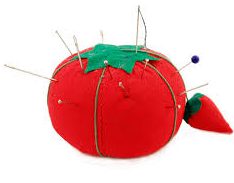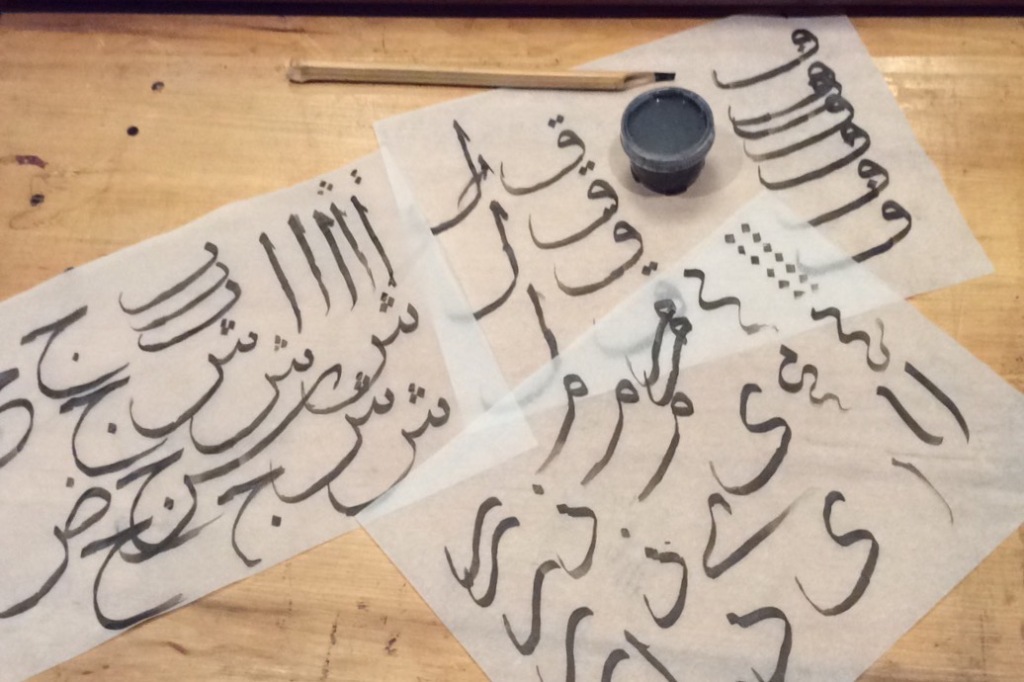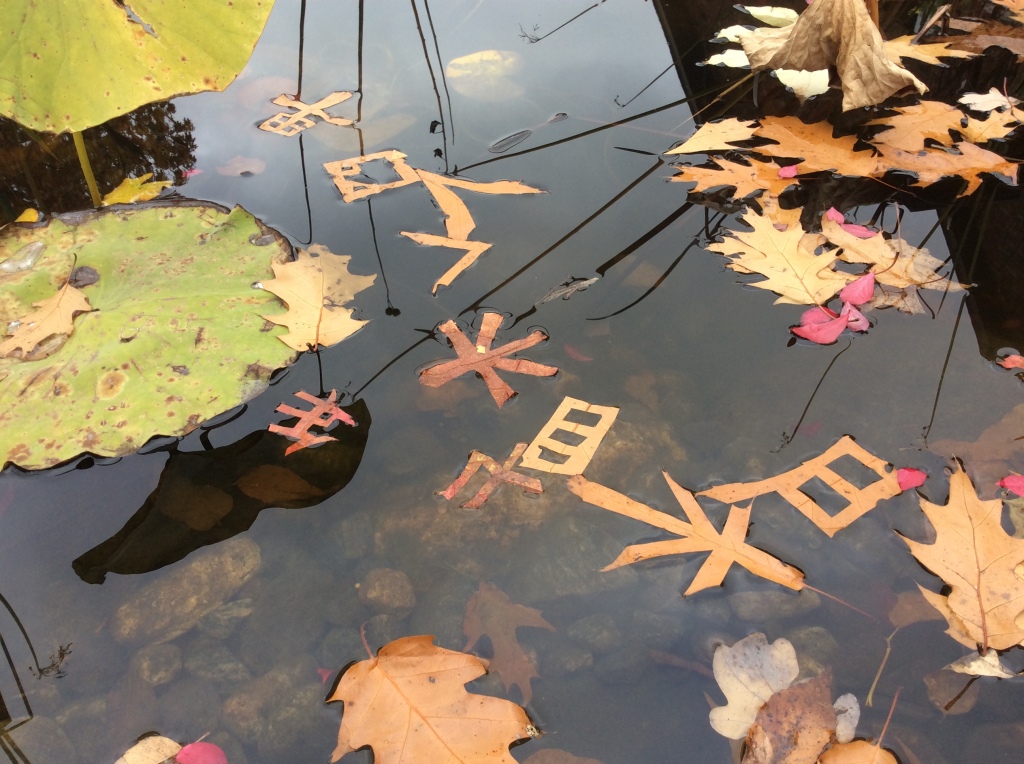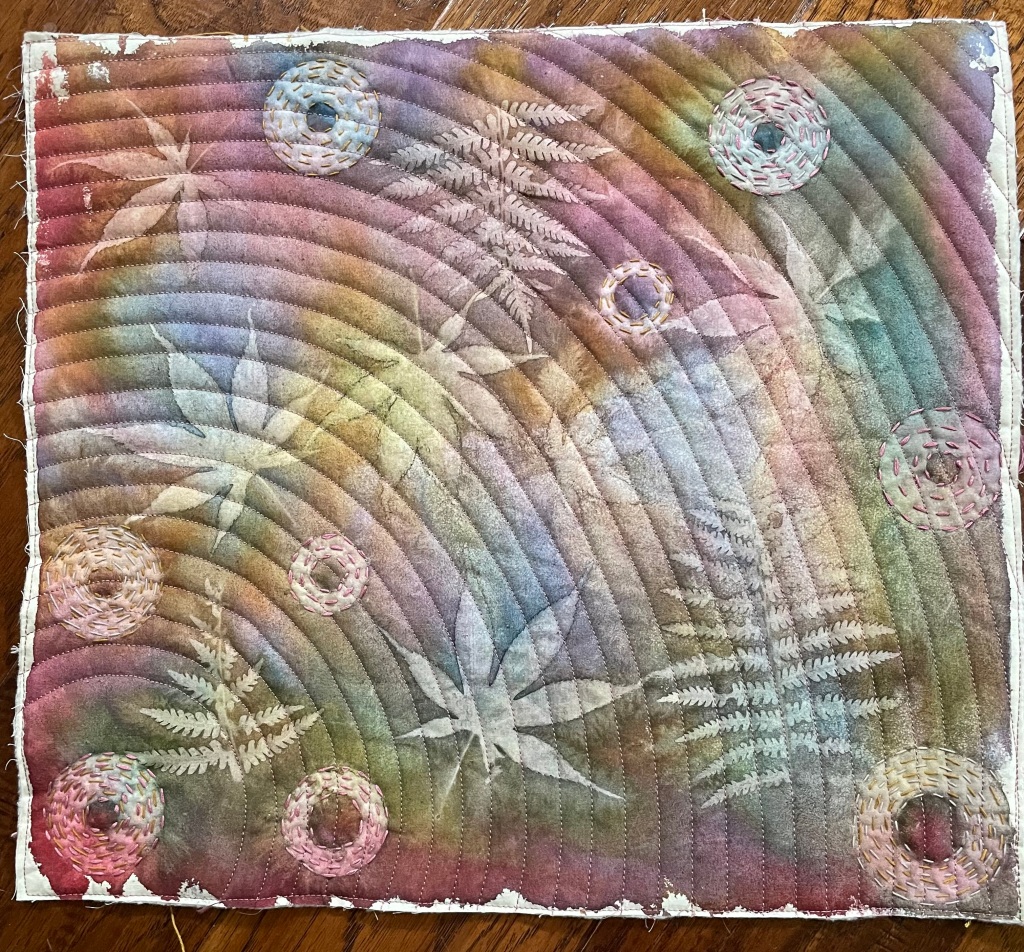A few years ago, I blogged about my “Kanji quilt”. It was a piece I created as an assignment in a “Calligraphy and Conceptual Art” course I took at my local university. The course was a lot of fun. We were able to try Arabic calligraphy (my attempts at right) and Japanese calligraphy, as well as learning about artists whose work was calligraphy- or text-based.
One assignment was to make our own art pieces, inspired by Japanese calligraphy and its improvisational nature. My first go involved cutting Japanese kanji characters out of autumn leaves and floating them in a pond. But when I ran this by my instructor at a progress meeting, she said it was trite.
With just days before the assignment was due, I was back to the drawing board. (I still like the picture I took, though.)
I decided to use improv piecing to create kanji quilt blocks. I had not done a lot of improv piecing prior to this, so I found the process of free-cutting and free-piecing to be a big change from traditional piecing. At right, you can see the quilt top I turned in. The instructor was impressed that I had done the project in fabric, but she felt that the blocks were not improvisational enough: she would have liked to see even more variation in the piecing. Well — she wasn’t wrong. She asked me afterward if I would continue to work on the piece, and we discussed adding more appliqued kanji, or quilting in some kanji shapes. But after the course was over, the quilt top sat for years in my sewing room, while I contemplated how to improve it.
Recently, my friend Celeste (Meerkat Shweshwe) offered an online class in improvisational piecing techniques. I joined, thinking that this might be an opportunity to move my Kanji quilt forward. I chopped the quilt apart, separating the kanji into blocks that would be surrounded by improv piecing. I even pulled out another orphaned block, left from a Jacquie Gering class called “Designing with Line”. Because that block had some lime green fabric in it, I decide to incorporate more lime green into the new version of the quilt, which added some life to the otherwise achromatic colour scheme.

As we explored new ways to piece improvisationally, I gained more elements to play with on my design wall. I continued to cut units apart and make new ones as I explored ways to arrange my growing collection of blocks. Celeste was such a great source of encouragement to play. Just like with writing, you have to fight the urge to settle on an idea too early, and give yourself permission to wander down the creative path and see where it takes you.
Finally, I arrived at an arrangement that I found pleasing. It repeats shapes in different sizes and orientations; plays with value; and uses colour, line and repetition to move your eye around the quilt. I’m actually quite happy with it.
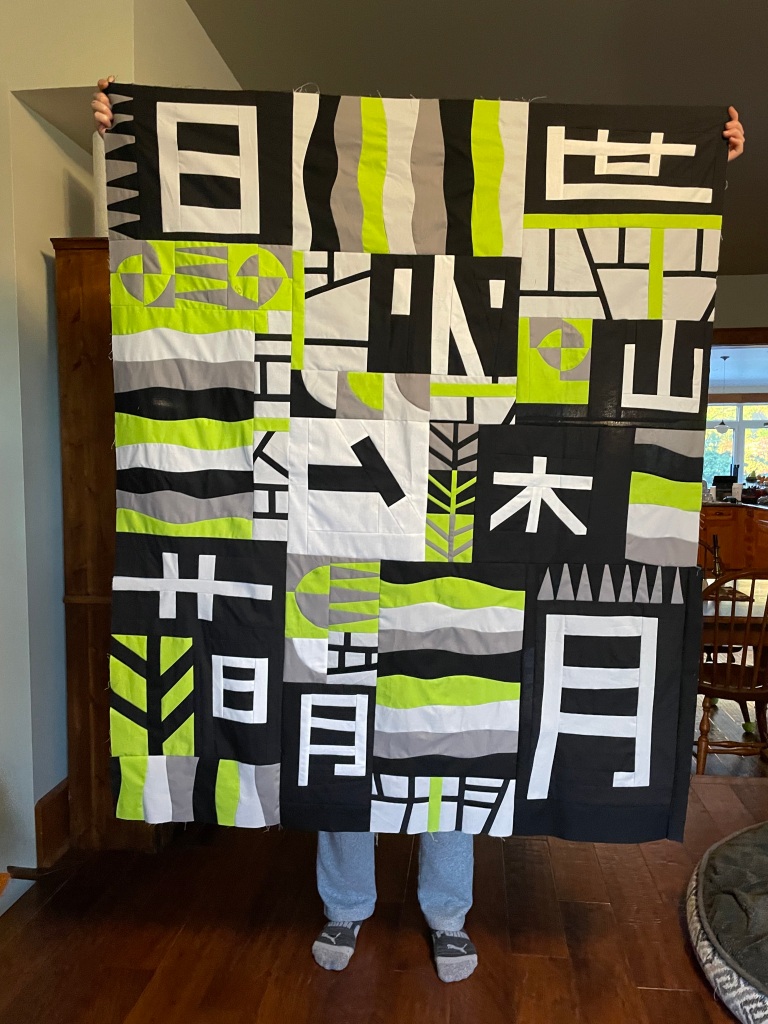
Someone asked me what it “says”. It doesn’t say anything. The idea of the original project was to explore text as shape, without regard for meaning. So while my piece does include kanji for sun, moon, mountain, etc., it also has some shapes that are kanji-like, but aren’t real kanji.
Oh, and in case you’re interested, the Japanese word “kanji” literally means “Chinese characters”, since ancient Japan adopted the Chinese writing system, much as ancient Britain adopted the Roman alphabet.
Next step, I need to get quilting, so I can hang up my Kanji quilt and enjoy it!
